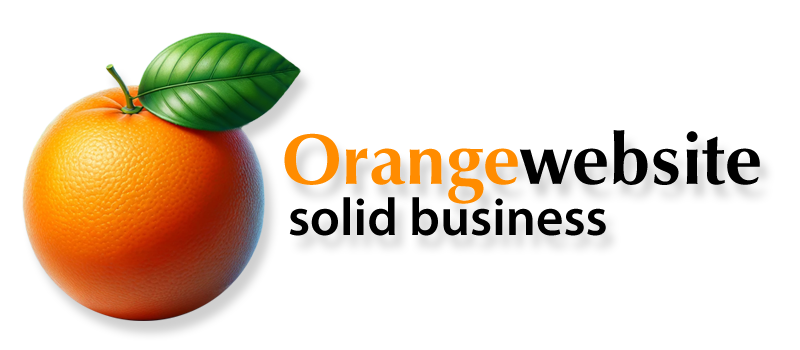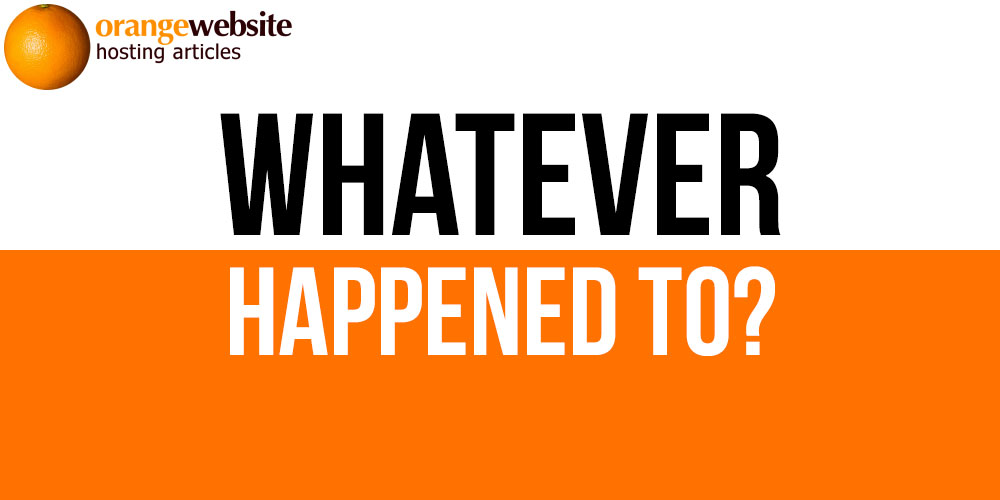Whatever Happened To…
Whatever Happened to….?
Computers, the internet, and cell phones are such an important part of everyday life it is hard to imagine the world without them. Our computers now fit on our laps, our cell phones in our pockets, and we can seemingly pull the internet out of thin air almost anywhere. The road to get here, however, has been paved with some amazing, if not short-term, digital devices, programs, and web trends. We thought it might be fun to revisit some of these digital creations to discover what happened to them.
Mosaic – If you were browsing the internet prior to October 1994, odds are you were using a browser called Mosaic. Since Mosaic made it possible for users of Microsoft Windows, Macintosh, and the Unix X Window System to all use it, it facilitated more widespread use of the internet. There were four generations of Mosaic; 1.0, 2.0, 2.1, and 3.0. Although it made a huge impact, it was on the scene for only about 4 years. The creators of Mosaic, Marc Andreessen, and Jamie Zawinski, went on to develop Netscape. Today, Mosaic.com takes visitors to a sales and marketing company. Netscape.com, interestingly enough, redirects to America Online (AOL).
Floppy Discs – Before flash drives, computer users saved and exchanged data on thin magnetic discs called floppy discs or diskettes. In the mid-70’s, large 8” discs were frequently used, eventually being replaced by the 5 1/4” disc and then the 3.5 inch disc. Subsequently, zip-discs arrived on the scene, being replaced with CDs and DVDs. Now, these too, are being escorted out by digital storage and file sharing services on “the cloud”.
Myspace – There are people who make things happen and then there are those who wonder “what the heck happened?” Myspace experienced a bit of both with its meteoric rise and fall. The social media website took the internet by storm in 2003 and in 2005 was purchased by Rupert Murdoch’s News Corp for over a half of a BILLION dollars. So what happened? Some say that Myspace got too greedy tried to own it all, others say News Corp was too “corporate”. Others suggest Myspace was unresponsive to the needs of its members. What really happened was Facebook. Today, MySpace continues as a music, entertainment, and culture website, a mere shadow of its former self. Today, Facebook has over 2 billion members worldwide.
GeoCities – Members were able to build websites reflecting their personality and hobbies and millions of people did just that. GeoCities started in 1994 and at one point was the third most visited website on the internet. Yahoo acquired GeoCities in 1999 and the service was discontinued in 2009.
GameBoy – When Nintendo released its GameBoy portable gaming system in 1989, it quickly sold one million units. It was pretty basic with a green monochrome screen, and Sega soon competed in the space with its more colorful Game Gear system. They were multiple incarnations of the Game Boy including Game Boy Color and Game Boy Advance. Over 200 million GameBoy units ultimately were sold.
FarmVille – Developed by Zynga and released on Facebook in mid-1999, it soon became the most popular game on the social media website, a spot which it held for two years. In 2010, at its peak, Farmville had almost 84 million users. After 2011, the game began losing active players. In mid-2011, it fell to 7th place on Facebook’s gaming list. By May of 2016, it was ranked 110th in daily users. While the game has lost much of its luster it is still available and has been joined by Farmville 2.
Energy Gobbling Data Centers – Unfortunately, data centers that waste energy and pollute the planet are still a big issue in technology today. They have been referred to as “the steel mills” of the modern area. The United States Department of Energy says that data centers use 10 to 50% of the amount of energy of typical office space. Much of the energy used is not just to power the servers but in keeping the space cool to keep servers functioning properly. It is estimated that 10% of all the power used by the US Government is used powering data centers. This is a global problem that continues to this day but there are alternatives.
Choosing an Eco Web Hosting Company
Hosting websites in a traditional data center is like still checking your Myspace page, storing data on floppy discs or playing Farmville. You just shouldn’t do it anymore. Not when there are “green” web hosting solutions like OrangeWebsite. We are an eco web hosting company headquartered in Iceland, considered one the safest places to host a website on the planet. Our cooler temperatures allow us to use less energy in powering our data centers. In Iceland, over 99% of the electricity is produced from renewable resources like geothermal and hydroelectric. We even encourage our employees to work from home, using less fuel by putting fewer cars on the road.
When you host with OrangeWebsite, you have access to a selection of “green” labels to place on your website, verifying you are using an environmentally friendly hosting company. This can help you appeal to a broader audience of like-minded people to use your services. Hosting with an eco web hosting company not only is the right thing to do, OrangeWebsite makes it practical. We offer a variety of hosting plans to suit an organization of all sizes and needs. We provide a 30-day money-back guarantee and offer secure web hosting. At Orangewebsite.com, you can sign up anonymously and pay via Bitcoin, cash by mail, PayPal or electronic transfer. We offer a 99.9% uptime and 24-hour technical support. Iceland offers exceptional modern Freedom of Speech legislation as well.
Don’t get caught in dated technology or yesterday’s thinking. If you are interested in moving forward with green web hosting, contact us at OrangeWebsite.com. We are the organic web hosting solution.


Recent Comments